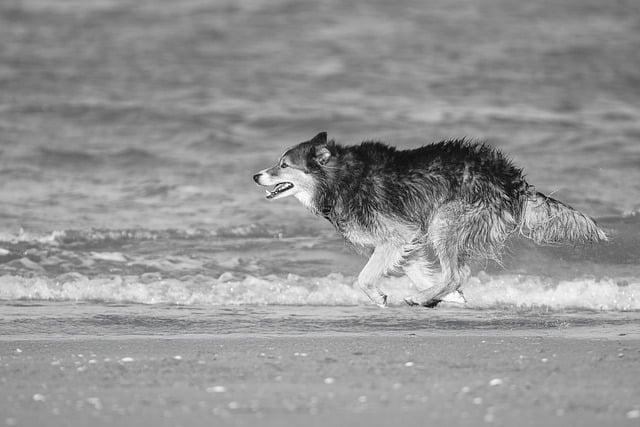One sunny afternoon, Sarah noticed her usually well-behaved dog, Max, suddenly barking at the mailman and digging up her garden. Confused and frustrated, she wondered, “Why is my dog behaving badly all of a sudden?” After a quick consultation with a veterinarian, she learned that changes in routine, stress, or even health issues could trigger such behavior. Understanding this helped Sarah address Max’s needs, reinforcing their bond. If your dog is acting out, don’t ignore it—seek professional advice to uncover the root cause and restore harmony in your home.
Contents
- Understanding the Underlying Causes of Sudden Behavioral Changes in Dogs
- Identifying Environmental Triggers That May Influence Your Dogs Behavior
- The Importance of Routine and Consistency in Canine Behavior Management
- Effective Strategies for Rehabilitating Your Dogs Behavior and Restoring Harmony
- Q&A
Understanding the Underlying Causes of Sudden Behavioral Changes in Dogs
When a dog exhibits sudden behavioral changes, it can be alarming for pet owners. Understanding the root causes of these shifts is crucial for addressing the issue effectively. One of the primary factors to consider is **health-related problems**. Conditions such as pain, illness, or even neurological disorders can lead to unexpected aggression, anxiety, or withdrawal. A visit to the veterinarian can help rule out any underlying medical issues that may be affecting your dog’s behavior.
Another significant aspect to explore is **environmental changes**. Dogs are creatures of habit, and any alterations in their surroundings can trigger stress or anxiety. This could include moving to a new home, changes in the household dynamics, or even the introduction of new pets or people. It’s essential to observe how these changes might be impacting your dog’s emotional state and to provide them with a stable and comforting environment to help them adjust.
Lastly, consider the impact of **training inconsistencies**. If your dog has been subjected to mixed signals or a lack of reinforcement for desired behaviors, they may become confused and act out. Establishing a consistent training routine and using positive reinforcement can help reshape your dog’s behavior. Engaging with a professional trainer or behaviorist can provide tailored strategies to address specific issues and restore harmony in your relationship with your pet.
Identifying Environmental Triggers That May Influence Your Dogs Behavior
Understanding your dog’s sudden behavioral changes often requires a closer look at their environment. Dogs are highly sensitive to their surroundings, and various factors can trigger unexpected reactions. By identifying these environmental triggers, you can take proactive steps to help your furry friend regain their composure and happiness.
Consider the following potential influences:
- Changes in Routine: Dogs thrive on consistency. A new work schedule, a change in family dynamics, or even a different walking route can unsettle them.
- New Additions: The arrival of a new pet, baby, or even a visitor can create stress. Dogs may feel threatened or anxious, leading to behavioral issues.
- Environmental Stimuli: Loud noises, such as thunderstorms or fireworks, can trigger anxiety. Similarly, the presence of unfamiliar animals or people can provoke fear or aggression.
- Health Issues: Sometimes, behavioral changes stem from underlying health problems. Pain or discomfort can lead to irritability or withdrawal.
To effectively address these triggers, observe your dog’s behavior closely. Take note of when the changes occur and what might be happening in their environment at those times. Keeping a journal can help you identify patterns and correlations that may not be immediately obvious.
Once you’ve pinpointed potential triggers, consider implementing changes to create a more stable environment. This might involve establishing a consistent routine, providing a safe space for your dog, or gradually introducing new elements to their surroundings. Remember, patience is key; it may take time for your dog to adjust and for their behavior to improve.
The Importance of Routine and Consistency in Canine Behavior Management
Establishing a consistent routine is crucial for your dog’s well-being and behavior. Dogs thrive on predictability, and a structured environment helps them understand what is expected of them. When routines are disrupted, it can lead to confusion and anxiety, which often manifests as undesirable behaviors. By maintaining a regular schedule for feeding, walks, playtime, and training, you provide your dog with a sense of security and stability.
Consistency in training techniques is equally important. Dogs learn best when they receive clear and consistent cues from their owners. If commands are given inconsistently or if responses to behaviors vary, your dog may become unsure of what is acceptable. This inconsistency can lead to frustration for both you and your pet, resulting in behavioral issues. Adopting a unified approach to training, where all family members are on the same page, can significantly improve your dog’s behavior.
In addition to routine and consistency, positive reinforcement plays a vital role in behavior management. Rewarding your dog for good behavior encourages them to repeat those actions. This method not only strengthens your bond but also reinforces the behaviors you want to see more of. By integrating positive reinforcement into your daily routine, you create an environment where your dog feels motivated to behave appropriately.
Lastly, understanding that changes in routine can impact your dog’s behavior is essential. Life events such as moving, changes in family dynamics, or even alterations in your schedule can create stress for your pet. Being mindful of these changes and adjusting your routine accordingly can help mitigate behavioral issues. By prioritizing routine and consistency, you empower your dog to feel secure, leading to a happier and more well-adjusted companion.
Effective Strategies for Rehabilitating Your Dogs Behavior and Restoring Harmony
Understanding the root cause of your dog’s sudden behavioral changes is crucial for effective rehabilitation. Often, these shifts can stem from various factors such as stress, changes in the household, or even health issues. To address these concerns, start by observing your dog’s environment and routine. Look for any recent alterations that might have triggered this behavior, such as:
- New family members or pets
- Changes in your schedule or routine
- Moving to a new home
- Loss of a companion or significant change in the household
Once you’ve identified potential triggers, it’s essential to create a structured environment that promotes positive behavior. Establishing a consistent routine can provide your dog with a sense of security and predictability. Incorporate regular exercise, mental stimulation, and training sessions into your daily schedule. This not only helps to channel their energy but also reinforces good behavior through positive reinforcement techniques. Consider the following strategies:
- Daily walks and playtime to burn off excess energy
- Interactive toys to keep their mind engaged
- Short, positive training sessions to reinforce commands and good behavior
In addition to routine, socialization plays a vital role in rehabilitating your dog’s behavior. Gradually exposing your dog to new experiences, people, and other animals can help reduce anxiety and build confidence. Start with controlled environments, such as dog parks or training classes, where your dog can interact with others in a safe setting. Remember to monitor their reactions and provide positive reinforcement for calm behavior. This approach not only helps in reducing fear-based behaviors but also fosters a sense of community for your pet.
Lastly, don’t hesitate to seek professional help if needed. A certified dog trainer or a veterinary behaviorist can provide tailored strategies and insights specific to your dog’s needs. They can help you navigate complex behavioral issues and ensure that you are employing the most effective techniques for rehabilitation. By combining your efforts with professional guidance, you can restore harmony in your home and help your dog return to their happy, well-adjusted self.
Q&A
-
What could cause sudden behavioral changes in my dog?
Sudden behavioral changes in dogs can be attributed to various factors, including:
- Health issues or pain
- Changes in environment or routine
- Stress or anxiety triggers
- Age-related cognitive decline
-
How can I determine if my dog is in pain?
Signs that your dog may be in pain include:
- Whining or barking excessively
- Changes in appetite or drinking habits
- Reluctance to move or play
- Unusual aggression or withdrawal
If you notice these signs, consult your veterinarian for a thorough examination.
-
What should I do if my dog is stressed or anxious?
To help your dog cope with stress or anxiety, consider the following:
- Establish a consistent routine
- Provide a safe and quiet space
- Engage in regular exercise and mental stimulation
- Consult a professional trainer or behaviorist if needed
-
When should I seek professional help for my dog’s behavior?
If your dog’s behavior changes are severe or persistent, it’s crucial to seek professional help. Signs that indicate the need for a trainer or behaviorist include:
- Escalating aggression towards people or other animals
- Destructive behavior that poses safety risks
- Severe anxiety that disrupts daily life
- Inability to manage the behavior through training
Early intervention can lead to better outcomes and a happier, healthier dog.
sudden behavioral changes in your dog can stem from various factors, including health issues, environmental shifts, or stress. Understanding these triggers is essential for effective intervention. Seek professional guidance to restore harmony in your home.

大家好,我是彼得潘,專業的手法身體治療師。我喜歡探索和研究各種主題,並透過與人工智慧的合作分享專業、實用、有趣的文章。我們定期進行人工審核,以確保內容的準確性。如果您發現文章中有任何不準確的地方,請隨時與我們聯繫,我們會及時糾正。您可以透過 [email protected] 與我們聯繫。



